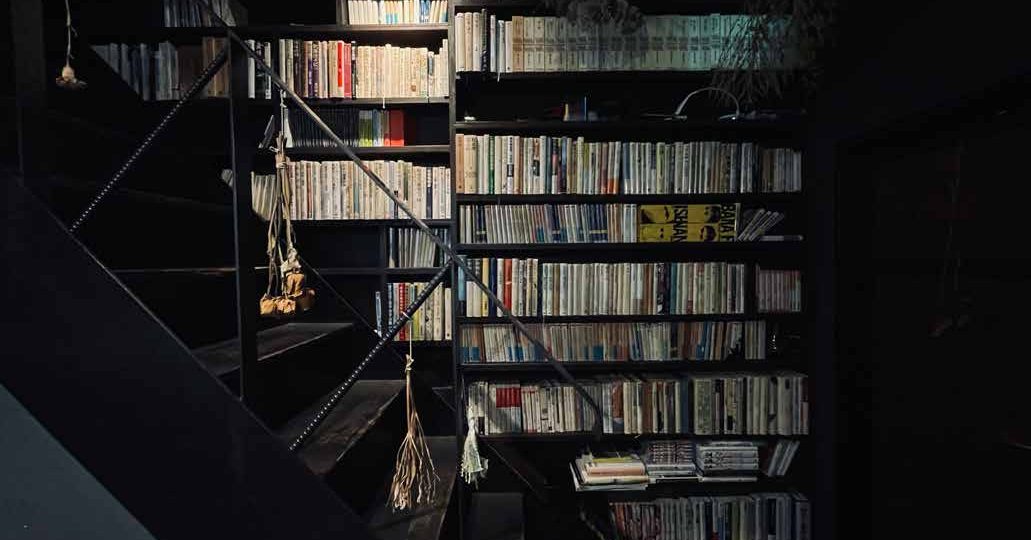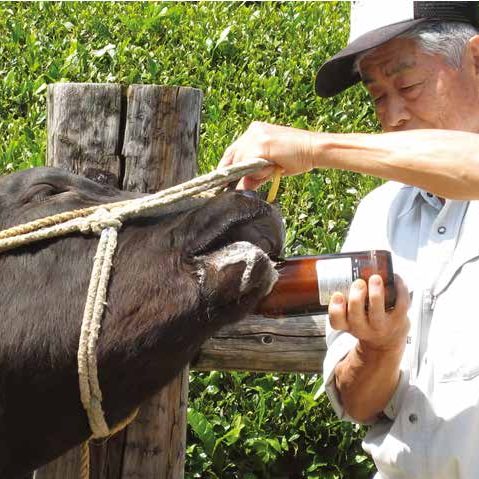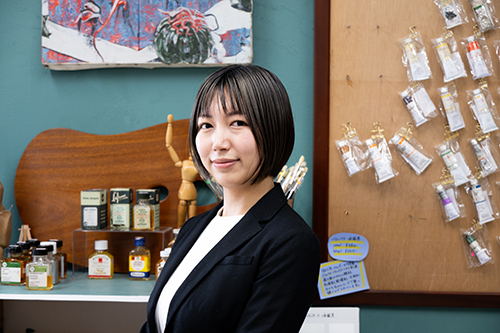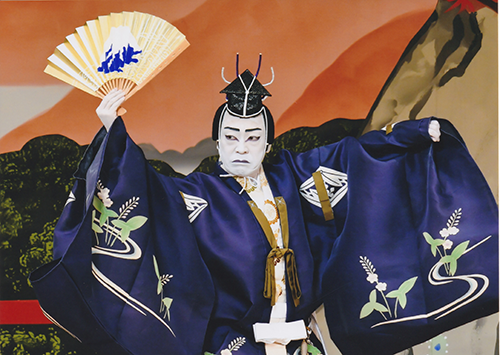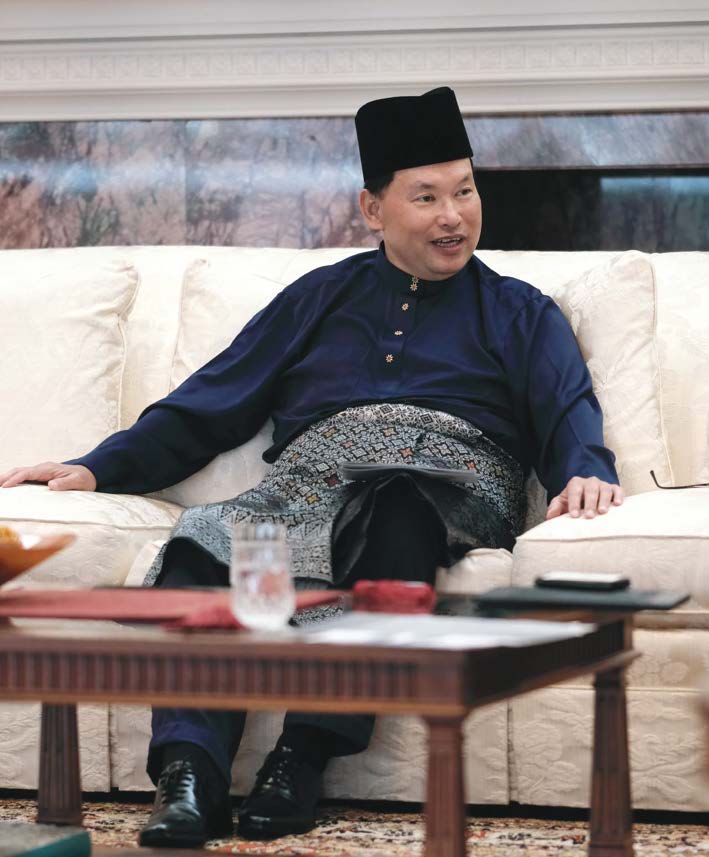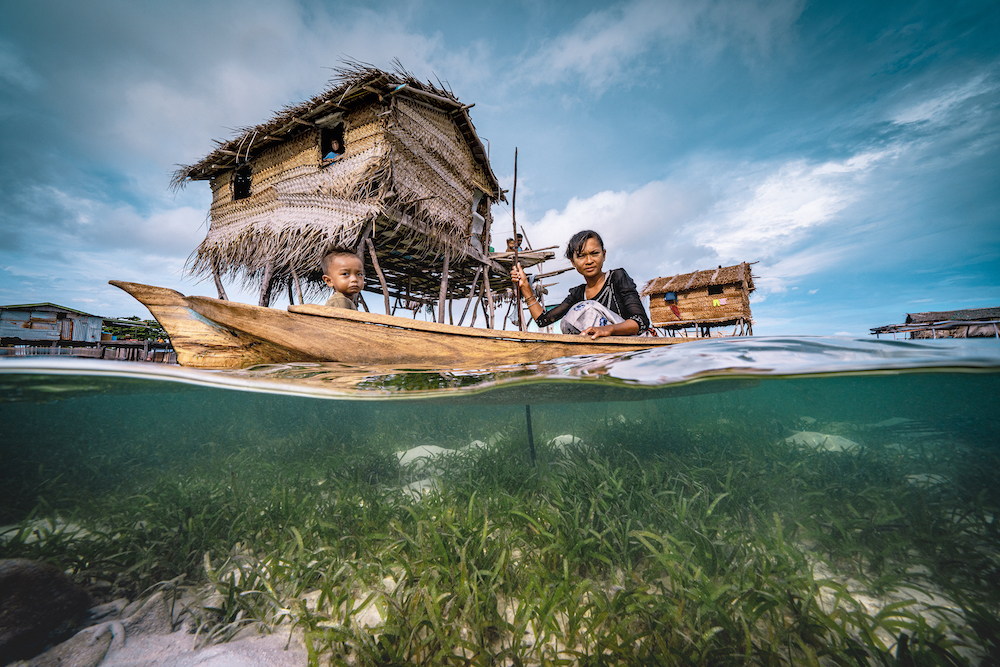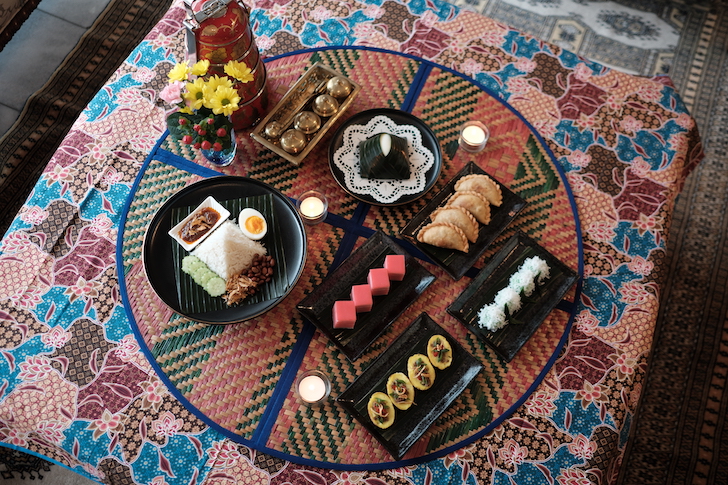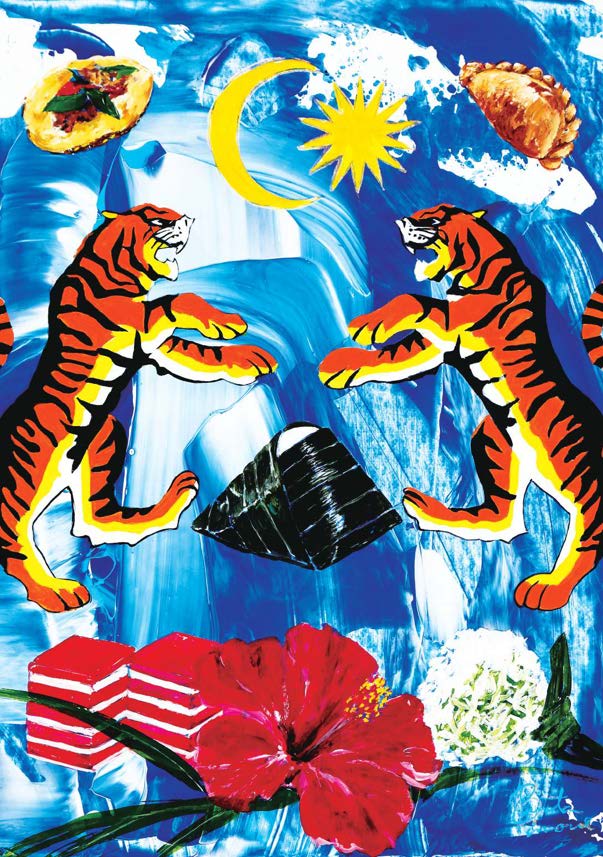-
Japan’s Power of Storytelling
- Hiragana Times
- Dec 19, 2024
Japan’s Power of Storytelling | 日本の物語力
[Cover Story – January 2025 Issue]
In the history of the world, “books” have primarily been works such as “大説 (great opinions/views)” that record the doctrines of politicians and philosophers. In contrast, in Japan, 小説 (personal opinions/views), which reflect individual thoughts or creative stories written freely, have been widely enjoyed by the general public since ancient times.
世界の歴史においては、「書物」と言えば政治家や思想家の教義を記した「大説」が主流です。対して、日本では古くから、個人が自分の思いや創作物語を自由に書く「小説」が、庶民に広く親しまれてきました。The poetry anthology Man’yōshū, whose compilation began in the late 7th century, includes songs not only from emperors and nobles but also from farmers and soldiers without discrimination. In the early 11th century, the Tale of Genji, regarded as the world’s oldest full-length novel, was born.
7 世紀後半に編纂が始まった歌集『万集 』には 、天皇や貴族だけでなく、農民や兵士の歌も分け隔てなく収録されています。そして、11世紀初頭には世界最古の長編小説とされる『源氏物語』が誕生しました。During the Edo period, a genre called “Edo popular tales” developed, catering to the common people. Among these, Tōkaidōchū Hizakurige (Jippensha Ikku, 1802‒1809), classified as a “comical book,” gained popularity, and it is said that Edo townspeople laughed out loud while enjoying it.
江戸時代には、「江戸娯楽物語」と呼ばれる庶民向けのジャンルが発展します。その中でも『東海道中膝栗毛』(十返舎一九、1802年~1809年)は「滑稽本」として人気を集め、江戸の庶民たちは声を上げて笑いながら楽しんだと言われています。Furthermore, Nansō Satomi Hakkenden (Takizawa Bakin, 1814‒1842), written on a grand scale across 98 volumes and 106 books, has something in common with the modern manga One Piece.
さらに、全98巻106冊という壮大なスケールで書かれた『南総里見八犬伝』(滝沢馬琴、1814年~1842年)は、現代の漫画『ワンピース』にも通じるものがあります。Bakin’s close friend, Katsushika Hokusai, illustrated the work, contributing to its immense popularity. This epic tale, depicting eight swordsmen with jewel-like orbs inscribed with “benevolence,” “righteousness,” “propriety,” “wisdom,” “loyalty,” “faith,” “filial piety,” and “brotherly love” leading the fallen Satomi clan to restoration, is said to have inspired the manga Dragon Ball.
馬琴の親友であった葛飾北斎が挿絵を担当し、大人気となりました。「仁・義・礼・智・忠・信・孝・悌」の文字が刻まれた玉を持つ八剣士が没落した里見家を復興に導くまでを描いた大長編物語は、後に漫画『ドラゴンボール』の元になったとも言われています。“Nansō” refers to the central and southern regions of present-day Chiba Prefecture. Please enjoy the cover art for this issue, featuring the Reiwa-era Nansō Satomi Hakkenden illustrated by Bunta Inoue, who has an atelier in that area and also serves as an art ambassador for Minami-Bōsō, Chiba. Be sure to also appreciate the illustrations included within this issue.
「南総」は現在の千葉県中部および南部を指します。その地にアトリエを構え、千葉南総の芸術大使も務める井上文太氏が手掛けた表紙、令和版「南総里見八犬伝」とともに、本号内の挿絵もお楽しみください。 -
From Ancestry to 6,000 Descendant Varieties: The Lineage of Rice in India
- Hiragana Times
- Nov 18, 2024
From Ancestry to 6,000 Descendant Varieties: The Lineage of Rice in India
祖先から6,000種の子孫へ:インドに生きる稲の系譜
[Spotlights – December 2024 Issue]
We are blessed to partake in the seeds of rice plants.
私たちは、稲の種子であるお米をいただいています。
Rice is believed to have first appeared as a wild species around 10 to 15 million years ago.
稲が野生種として現れ始めたのは約1500万〜1000万年前とされています。
Wild species, such as Oryza rufipogon, began to take root and thrive along the warm, humid riverbanks and wetlands of Southeast and South Asia, signaling the first pulse of life.
温暖で湿潤な東南アジアや南アジアの川沿い・湿地帯に適応したオリザ・ルフィポゴン(Oryza rufipogon)などの野生種が自生するようになりました。
Ancient rice has also been discovered at Jomon-era archaeological sites in Japan, indicating that rice plants have existed on the Japanese archipelago since ancient times.
日本でも縄文時代の遺跡から古代米が発見されており、日本列島でも古くから稲が生息していたとされています。
These wild species originally displayed a trait known as “shattering,” in which seeds naturally fell when ripe. However, humans selected non-shattering mutations, making them easier to harvest, and continued to cultivate them over many generations.
この野生種は、穂が熟すと種子が自然に落ちる「脱落性」をもっていましたが、人類は収穫しやすい「非脱落性」の変異種を選び、何世代にもわたり栽培を続けました。
Eventually, around 9,000 years ago (7,000 BCE), stable paddy rice cultivation practices developed along China’s Yangtze River.
やがて、9000年前(紀元前7000年)頃には、中国の長江流域で安定した水田稲作が発展します。
Japonica rice (found in Japan and China), Indica rice (common in India and Southeast Asia), and other varieties spread across Asia, adapting to and taking root in each region.
ジャポニカ米(日本や中国)、インディカ米(インドや東南アジア)などがアジア各地へ広がり、地域特有の品種がそれぞれ根付いていきました。
Wild rice species still exist today, but in many rice-growing areas worldwide, they are often regarded as an unwelcome form of “weedy rice.”
野生種は現在も存在しますが、世界の稲作地域の多くでは「雑草型イネ」として嫌われています。
In certain regions of India, however, wild rice is respected as a valuable traditional crop, and it is cultivated and harvested using age-old methods.
一方、インドの一部地域では野生種が価値ある伝統的な稲として受け入れられ、昔ながらの手法で栽培・収穫が行われています。
At its core lies a longstanding respect for these ancient species and a deep-seated desire for harmony with the natural environment.
その背景には、長年親しまれてきた野生種への敬意、自然環境との共存を願う心があります。
In Hindu wedding ceremonies, rice symbolizes fertility and union. As part of the ritual, the couple showers each other with handfuls of rice, enveloping each other in blessings and well-wishes for a prosperous future together.
また、ヒンドゥー教の結婚式では米は豊穣と結合の象徴とされ、夫婦が互いに米を振りかけ合って幸運を祈る儀式が行われます。
This ritual is based on the belief that the bride brings prosperity to her new home, symbolizing the cultural and spiritual importance of rice.
これは花嫁が新しい家に富をもたらすという言い伝えに基づいており、米の精神的・文化的な重要性を象徴しています。
India currently cultivates over 6,000 varieties of rice and is the world’s largest rice exporter.
インドでは現在6,000種類以上の米が栽培されており、世界最大の米輸出国となっています。
Just as Buddhism and other philosophical teachings originated in India, the origins of rice can also be traced back to this land.
仏教をはじめとする哲学思想の発祥がインドであるように、米の起原もインドにたどり着きます。
A journey to discover the “root of life (i-ne),” through rice ultimately becomes a journey into the origins of humanity itself.
「イネ(命の根)」を巡る旅は、人類の命のルーツを探る旅となるでしょう。 -
A new café blending into Jimbocho — Mafumi Coffee and Books
神保町になじむ新しい喫茶店——眞踏珈琲店[Spotlight – November 2024 Issue]
Mafumi Coffee and Books, which opened in 2016 in Jimbocho (Chiyoda Ward, Tokyo), one of Japan’s most famous secondhand book districts, is still a relatively new presence in the area. The owner, Mr. Mafumi Oyama, is also a sociology researcher with fieldwork experience in the United States.
日本屈指の古書店街である神保町(東京都千代田区)に2016年にオープンした「眞踏珈琲店」は、この町ではまだ新しい存在です。店主の大山眞踏さんは社会学研究者でもあり、米国でのフィールドワーク経験もあります。
The roughly 5,000 books lining the shop’s shelves are mostly from Mr. Oyama’s personal collection. Inside the remodeled standalone house, there is a large counter on the first floor, and the second floor, as well as the stairs, are packed with books. The shelves hold books from a wide range of genres, including literature, philosophy, and sociology.
店内に並ぶ約5,000冊の本の大半は、大山さんの私物です。一軒家を改装した店内には1階に大きなカウンターがあり、2階、そして階段にも所狭しと蔵書が並んでいます。棚にあるのは、文学、哲学、社会学など多岐にわたるジャンルの本です。The reason Mr. Oyama opened the café stems from his deep affection for a café where he once trained. He was strongly drawn to the relationships between the customers and the atmosphere of that café. He chose Jimbocho because he felt a connection with the town’s culture, which is home to many long-standing cafés that have been around for 50, 60, or even 70 years. It also suited his own love of books.
大山さんがこの店を開店したきっかけは、深く愛着を持って修業していた喫茶店での経験です。そこでのお客様と店の関係性や雰囲気に強く惹かれたといいます。神保町を選んだのは、50年、60年、70年と長く続く老舗の喫茶店が数多ある町の文化と、本好きの自分の気質が合ったからだそうです。At the café, Mr. Oyama roasts the beans himself and uses the nel drip method to brew coffee, respecting the freedom of how customers choose to spend their time. Some people might feel intimidated by coffee specialty shops, but at Mafumi Coffee and Books, it’s perfectly fine to chat, read a book, or just daydream. The shop stays open until 11 p.m. on weekdays to make it easy for people to drop by after work.
店では、大山さん自身が焙煎した豆をネルドリップで淹れ、お客さんの自由な過ごし方を尊重しています。コーヒー専門店に敷居の高さを感じてしまうという人もいますが、この眞踏珈琲店では雑談をしても、本を読んでも、ぼんやりしていても構いません。平日に23時まで営業しているのは、仕事帰りの人も気軽に立ち寄れるようにという考えからです。Mr. Oyama puts his heart into each daily cup of coffee, aiming for the shop to last “50 years, or ideally even 100 years.”
大山さんは「50年、できれば100年後も残る店でありたい」と、日々の1杯のコーヒーに思いを込めています。Every autumn in Kanda-Jimbocho, the “Kanda Secondhand Book Festival” is held. In 2024, it is scheduled from October 25 to November 4. Many people will likely take a break at Mafumi Coffee and Books while browsing for books.
神田神保町では毎年秋に「神田古本まつり」が開催され、2024年は10月25日から11月4日までの予定です。本選びの合間に、眞踏珈琲店で一息つく人も多いことでしょう。Photo: Mafumi Coffee and Books
Text: IKEDA Miki写真提供:眞踏珈琲店
文:池田美樹 -
“Wagyu” Co-Being with “Wajin”
“和人” とともに在る“和牛”。
[Japan Style – November 2024 Issue]
Throughout the world, food cultures rooted in the natural environment have developed in different regions. For example, northern Europe, including northern England and Ireland, is cold and has many grasslands, making it suitable for cattle and sheep grazing. As a result, livestock farming has developed as an important industry.
地球上では、各地で風土に根ざした食文化が育まれてきました。例えば、イギリス北部、アイルランドなどを含むヨーロッパ北部は寒冷で牧草地が多く、牛や羊の放牧に適していることから牧畜が重要な産業として発展しました。In Japan as well, Hokkaido, with its cool climate similar to northern Europe, takes advantage of its vast land for dairy farming. The number of dairy cattle raised there is overwhelming, and the production of raw milk, the base for dairy products, accounts for more than 50% of the nation’s total. Hokkaido also ranks first in the country for beef cattle production, but there is not much production of what is considered “Wagyu.”
日本でも、ヨーロッパ北部に似た冷涼な気候の北海道では、広大な土地を生かして酪農が盛んです。特に乳牛の飼育頭数は圧倒的で、乳製品の原料となる生乳の生産量は全国の50%超。肉牛生産でも全国1位ですが、いわゆる「和牛」とされる肉用牛の生産は多くありません。The place considered the origin of “Wagyu” is Niimi City in Okayama Prefecture. In Niimi City, known for producing high-quality iron sand, farmland was limited, so livestock farming developed as a substitute industry during the Edo period. The cattle raised in this area later became the foundation for Wagyu, which spread nationwide and was gradually improved into what is now known as “Wagyu.”
「和牛」の発祥とされているのが岡山県新見市です。良質な砂鉄の産出地として知られた新見市では耕作地が限られていたため、江戸時代に畜産が代替産業として発展しました。この地で飼育された牛が後に和牛の基礎となって全国へと広がり、現在の「和牛」へと改良されていきました。The three most famous Wagyu brands—Kobe beef, Matsusaka beef, and Omi beef—are known for their beautiful cut surfaces and tenderness. The “Tajima beef” (from the Tajima region of Hyogo Prefecture), which forms the basis of many of these well-known brands, is famous for its long history of bloodline management and breed improvement. In the Kyushu region, brands like “Miyazaki beef” and “Kagoshima Kuro-ushi” (black cattle) are famous for maintaining Wagyu’s superior bloodline while incorporating local breed improvements, and in the Tohoku region, “Yamagata beef” and “Maesawa beef” are well-known.
三大銘柄と言われる神戸ビーフ、松阪牛、近江牛は切断面が美しく、柔らかさが特徴です。これらの知名度が高いブランド牛の多くの基になっている「但馬牛」(兵庫県但馬地方)は、血統管理や品種改良の歴史が深いことで知られています。九州地方では、和牛の優れた血統を引き継ぎつつ地域特有の改良が施されたブランド牛「宮崎牛」や「鹿児島黒牛」が、東北地方では「山形牛」や「前沢牛」が有名です。In Japan, from the birth of a calf to when it becomes meat, everyone involved treats the cattle with great care, paying close attention and showing affection. Each calf is registered with a name, birthdate, bloodline—including parents, grandparents, and great-grandparents—where it was born, and who raised it. Each cow is given an individual identification number. This thoroughly managed traceability (production history) provides peace of mind.
日本では、牛の誕生から食肉になるまで、全ての関わる人たちが丁寧に細やかに心を配り、愛情を注いで扱います。生まれた子牛の名前、生年月日、両親、祖父母、祖父母の父母までの血統、どこの牛農家で生まれ誰が育てたのかといった戸籍があり、1頭ごとに個体識別番号が与えられます。きっちり管理されたトレーサビリティ(生産履歴)は、安心感につながります。Cattle farmers put their hearts into raising the cattle. In addition to grains, they feed the cows rice straw that has been aged for one to two years, and the 20 to 50 liters of water they drink daily is natural spring water. In summer, when the cows’ appetite decreases, they are even given beer. Farmers brush the cows every morning without fail, massage them with shochu, shampoo them to make their coats glossy, and in winter, they even splash cold water on the cows to stimulate the growth of soft, fluffy winter fur. Through constant trial and error, farmers spare no effort or labor.
牛農家は心を砕いて育てます。穀類のほか、1~2年熟成させた稲わらを食べさせたり、1日に20~50リットル飲む水は天然水、食欲が落ちる夏はビールを飲ませたりします。ブラッシングは毎朝欠かさず、焼酎を使って全身をマッサージ。毛並みを美しくするためにシャンプーをし、冬はあえて冷たい水をかけて身体を冷やしてふわふわの冬毛が生えてくるようにするなど、手間と労力を惜しまず試行錯誤を繰り返してきました。Cattle that are carefully raised like family by skilled and dedicated producers have calm expressions and beautiful physiques. It is said that the better the cow looks, the better the meat tastes. When it’s time for shipment, farmers reportedly pray, saying, “Thank you for growing up so well. Now, please go on to sustain the lives of many people.” They feel pride in raising cows that will become essential to human life and express gratitude to the cows for supporting human existence.
生産者の技術と人柄で家族のように大切に育てられた牛は、顔つきが穏やかで体軀も美しくなります。牛は見た目に比例して肉の味も良くなるのだそうです。出荷となり送り出す時、「ここまで育ってくれてありがとう。この先はたくさんの人の命になってくれ」と祈るのだとか。牛農家は、人間の命を支えてくれる牛に感謝しながら、育てた牛がみんなの命になることに誇りを持って育てています。Today, “Japanese Wagyu” has become incredibly popular worldwide and is recognized as Japan’s finest food product. The characteristic of “Japanese Wagyu” lies in its “marbled meat,” where fat is interwoven like a web among the lean meat, creating a melt-in-your-mouth richness. This is rare overseas and has garnered high praise. The tender meat, which can be cut with chopsticks, and the sweet fat that spreads in your mouth can only be experienced with Wagyu raised in Japan.
今や「日本の和牛」は世界で大人気となり、日本が誇る最高の食材となりました。「日本の和牛」の特徴は、赤身の間に網の目のように入ったサシ(脂肪)がとろけるような旨みを生み出す「霜降り肉」にあります。これは海外では珍しく、高い評価を得ています。箸で切れるほどに軟らかく、口の中に甘さが広がる良質な肉の脂は、日本で育てられた和牛でしか味わえません。Looking around the world now, Wagyu crossbred with Japanese bloodlines, known as Wagyu, is flourishing overseas. Australia, in particular, is the largest producer of Wagyu and has gained significant recognition. However, it is a completely different product from the Wagyu produced in Japan. Japanese Wagyu, raised with the passion and dedication of farmers who tend to their cattle daily, offers a deep flavor, smooth texture, and melt-in-your-mouth harmony that will be etched in your memory once you taste it.
今、世界を見渡すと、和牛の遺伝子を交配した海外産のWagyuが幅を利かせています。特にオーストラリアは最大のWgyu生産国で、知名度も高いのが現状ですが、日本で生産される和牛とは全くの別物です。真摯に日々牛に向き合う生産者の情熱とこだわりが込められた和牛は、一度口にすれば奥深い風味と滑らかな舌触り、とろける口当たりのハーモニーが記憶に刻み込まれることでしょう。 -
A painting of a bull celebrating the peace and stability of heaven and earth, under the protection of the Lord of the Big Dipper.
- Hiragana Times
- Oct 18, 2024
A painting of a bull celebrating the peace and stability of heaven and earth, under the protection of the Lord of the Big Dipper.
北斗星君天地安泰喜牛図[Cover Story – November 2024 Issue]
This painting by Bunta Inoue was created in 2021, the Year of the Ox, during “Tenchosetsu” (the Emperor’s Birthday) with prayers for “Tenchou Chikyuu” (long-lasting peace and stability).
井上文太氏によるこの絵画は、2021年丑年の「天長節」(天皇誕生日)に「天長地久」の祈りを込めて描かれたものです。
“Tenchosetsu” is a holiday that prays for the Emperor’s longevity and national peace, based on the ancient Chinese concept of “Tenchou Chikyuu.”
「天長節」は天皇の長寿と国家の平和を祈る祝日で、古代中国の「天長地久」の概念に基づきます。
This phrase expresses the wish for both heaven and earth to last forever, along with human life and societal stability.
この「天長地久」は、天と地が永続するように、人の寿命や社会の安定も続くべきという願いが込められた言葉です。
Inoue also incorporated teachings from Chapter 7 of Laozi’s Tao Te Ching into the painting.
また、井上氏は『老子』第7章にある「天地所以能長且久者」の教えも絵画に込めました。
This teaching states that heaven and earth do not exist for their own benefit. By discarding selfish desires and contributing to others, longevity and prosperity can be achieved.
これは、天地は自らの利益のために在らず。私欲を捨て、他者に貢献することで長寿と繁栄を得られると説いています。
The bull in the painting is also a symbol of strength and fertility in Greek mythology. This work, showing the bull gazing up at the starry sky, conveys a deep wish for eternal world peace and the development of humanity, in harmony with the universe and nature.
雄牛は、ギリシャ神話においても力と豊穣の象徴とされています。雄牛が星空を仰いでいるこの作品は、宇宙、自然との調和と共に永続的な世界平和と人類の発展へ強い思いが込められています。
This month’s Japan Style theme is “WAGYU” Co-Being with “WAJIN.” Please enjoy exploring Japan’s native cattle, inspired by this beautiful painting.
今月号のジャパンスタイルは「和人と共に在る和牛」。この絵画から得るインスピレーションと共に和の国の牛「和牛」の探究をお楽しみください。
-
[Spotlight – October 2024 Issue]
Expanding the Joy of Painting: A Reuse Shop for Secondhand Art Supplies
絵を描く楽しみを広げたいー中古画材のリユースショップ“Re arts Garden” is a small shop that collects and sells secondhand art supplies. Since there are very few shops that buy used art materials, many people end up throwing them away when they have leftovers they can’t use. This situation inspired Saki Arisawa, the representative of Re arts Garden, to start reusing art supplies.
「Re arts Garden[リアーツガーデン]」は中古画材の回収・販売を行う小さな店です。使用済みの画材は買い取ってくれる場所がほとんどないため、使い切れずに余った場合、多くの人が捨ててしまいます。そこで画材のリユースを思い立ったのが、リアーツガーデン代表の有澤紗生[ありさわさき]さんです。They take in art supplies that are still usable, either by accepting them for free or purchasing them, then clean and sell them at a low price.
まだ使える画材を無料で引き取ったり、買い取るなどして、クリーニングを施した上で安価で販売しています。During her time at art university, Ms. Arisawa noticed many art supplies going to waste and began thinking about what could be done. As a result, she opened this secondhand art supply shop in July 2022. The store, located a 12-minute walk from Nerima Station in Nerima Ward, Tokyo, offers a variety of art supplies, including pens, brushes, palettes, paints, pigments, and canvases, with paints available for as little as a few dozen yen.
有澤さんは、美術大学時代にたくさんの画材が無駄になっている状況を見て、なんとかできないかと考えました。そして、2022年7月にこの画材の中古ショップをオープンさせました。練馬駅(東京都練馬区)から徒歩12分の場所にある店の中には、ペン、筆、パレット、絵の具、顔料、キャンバスなどさまざまな画材が並んでおり、絵の具は数十円から買うことができます。Most of the art supplies she collects come from people in their 50s or 60s who no longer paint, or from their families. On the other hand, most of the customers are young people, such as students or hobbyists, and the number of young children who love painting is also increasing.
画材を引き取るのは主に絵を描かなくなった人やその家族からで、50代〜60代の人が多いといいます。一方、買いに来るのは学生や趣味で絵を描く人など若い方が多く、絵が好きな小さなお子さんも増えているそうです。Ms. Arisawa shared that she was very happy when a student preparing for university entrance exams bought art supplies from her shop and later returned to tell her they had passed. She also recalled a customer who was delighted to find a discontinued paint in the store.
大学受験を控えた学生さんがここで画材を買い、しばらくしてから合格したと報告しに来てくれた時はとてもうれしかったと、有澤さんは話してくれました。廃盤になった絵の具を店で見つけ、喜んでくれたお客様もいたそうです。If people can obtain professional-grade art supplies at affordable prices, more will enjoy painting. Art will become more accessible, and people’s hearts will be further enriched. Ms. Arisawa is passionate about making this shop a place that expands the joy of painting.
本格的な画材が手頃な値段で手に入れられたら、絵を描くことを楽しむ人はもっと増えます。アートがより身近になり、人々の心は一層豊かになることでしょう。有澤さんは、この店をそんな「絵の楽しさを広げる拠点」にしたいという熱い思いを抱[いだ]いています。Photo/Text: IKEDA Miki
写真・文:池田美樹 -
[New Review – October 2024 Issue]
Hide-and-Seek on a Deserted Island with 100 Adults
無人島で大人100人がかくれんぼFrom November 2nd to 4th, the event “Private Deserted Island! Hide-and-Seek 2024” will be held on Tsumagashima Island in Iki City, Nagasaki Prefecture.
11月2日〜4日、長崎県壱岐市の妻ヶ島[つまがしま]で「無人島貸切!無人島かくれんぼ2024」が開催されます。Hide-and-seek is a traditional game enjoyed around the world. With its simple rules, it can be played by anyone, regardless of culture or language.
「かくれんぼ」は世界の多くの国や地域で親しまれている伝承遊び。で、難しいルールがないため、文化や言語を超えて誰もが楽しめます。This time, 100 participants, including 10 seekers and 90 hiders, all of whom are university students or older, will take part. They will play hide-and-seek on the deserted island for two hours.
今回は大学生以上を対象に、鬼10人、隠れる人90人の合計100人が参加。2時間にわたって無人島でかくれんぼをします。Awards will be given not only to those who remain hidden until the end and to the seekers who find the most people but also based on a point system that considers factors such as the length of time hidden. Plans also include a barbecue and a campfire.
最後まで隠れきった人、多くの人を見つけた鬼の他、隠れた時間の長さなどポイント制でも表彰します。バーベキューやキャンプファイヤーも企画しています。 -
[Japan Style – October 2024 Issue]
Echoes of Spirit on Stage – Japanese Languages and Kabuki [Part2]
舞台に響く言霊日本語と歌舞伎 [パート2]
“Kabuki is like Japan’s imperial family. It values bloodlines above all, and if there is no legitimate son, they adopt to ensure the lineage continues. It is a unique environment, for better or worse. Since my parents’ divorce, I had no connection with Kabuki.
「歌舞伎は日本の天皇家と同じです。何よりも血脈を重視し、嫡男がいなければ養子を迎えるなどします。とにかく家系を途絶えさせるわけにはいかない。良くも悪くも特殊な環境にあるのです。親が離婚して以来、私と歌舞伎は無縁になりました。That doesn’t mean I harbored any resentment. I was raised without feeling lonely, even in a fatherless household, because I had parted from my father too early. After graduating from university, I aimed to become an actor in drama and film.”
だからといって悔しい思いをしたということはありません。そして、あまりに早く父と別れたので、父親が不在の家庭であっても寂しさを感じることなく育ちました。大学卒業後は、ドラマや映画の俳優を目指しました」Chusha is better known as Teruyuki Kagawa, an actor. His notable works include the “Hanzawa Naoki” series and the NHK Taiga drama “Ryomaden.” He is highly regarded for his strong, distinctive acting ability.
中車さんは、歌舞伎役者としてより俳優・香川照之(本名)として知られています。代表作はドラマ「半沢直樹」シリーズや大河ドラマ「龍馬伝」など。個性の強い圧倒的な演技力で高い評価を得ています。The reason he returned to the Kabuki stage, which he thought he had lost connection with, was the presence of his newborn son.
中車さんが、もう縁のないものと考えていた歌舞伎役者として舞台に立つことになったのは、誕生した息子の存在だったといいます。“My son is the grandson of En’o. He was born to perform Kabuki. I felt it suddenly. After nearly ten years of contemplating my son’s future, I finally decided to introduce him to the Kabuki world. In 2012, my son assumed the name of the fifth-generation Ichikawa Danko. At the same time, I assumed the name of the ninth-generation Chusha (note: the fourth-generation Ennosuke was inherited by Chusha’s cousin). That was 13 years ago, when I was 45.”
「息子は父・猿翁の孫にあたる。歌舞伎をやるために男子として生まれてきたのだ。ふと、そう、ふと感じたのです。それから10年近く息子の行く末について逡巡し、最終的に歌舞伎界に入れようと決意しました。2012年に息子が五代目市川團子を襲名します。それと同時期に、私も九代目中車を襲名するに至ったわけです(※四代目猿之助は中車の従弟が継承)。それが13年前、45歳の時のことです」。Typically, one cannot work under two names in the Kabuki world, but Chusha, already active as a popular actor, was granted a special exception.
通常、歌舞伎界においては二つの名を持ち活動することはできないのですが、中車さんはすでに人気俳優として活躍していたことから、特例として現在に至っています。“Looking back now, I think it was fate for our family to experience such turbulence. I believe it was predestined by heaven for me to be born into this family. Buddhism teaches ‘reincarnation,’ the belief that people are reborn after death. I believe in this, and I deeply feel that life circulates in this way.”
「今思いますのは、このような波乱の家なのだろうということ。そして、私がこの家に生まれ出ずることは、きっと天が決めていたのだと受け止めています。仏教には輪廻転生という、人は死後再び生まれ変わるという教えがありますが、私はそれを信じていますし、まさにこうして命が循環しているということを、私なりに深く感じています」During the interview, Chusha impressed us with his strong presence, passion, and sense of independence. He is also knowledgeable about historical texts, such as the “Nihon Shoki,” which are vital to historical Kabuki performances like “Yamato Takeru.” His extensive knowledge of Japanese history and culture, along with his keen intellect, left a strong impression.
インタビユーを受ける中車さんは目力が強く、熱情にあふれ、独立自尊を感じさせるに十分な人物でした。また、歌舞伎、特に時代物の演目の重要な幹である歴史書、例えば『ヤマトタケル』における「日本書記」などの書物に精通しており、日本の歴史や文化についても博識で、非常に聡明な印象も受けました。“These qualities may stem from his time spent at a Christian school during his middle and high school years and from studying social psychology at university. He has a deep understanding of the ancient Japanese language, ‘Yamato Kotoba,’ which is the foundation of Kabuki, and graciously accepted our request to write for our serialized column, ‘Nihongo Do.’
それらの根底には、中学・高校時代をキリスト教学校で過ごし、大学で社会心理学を学んだことが大きくあるのかもしれません。歌舞伎の母体とも言っていい古[いにしえ]の日本語「大和言葉」については造詣が深く、弊誌で連載の「日本語道」での執筆ご依頼したところ、快く引き受けてくださいました。“Japanese is a language that includes hiragana, katakana, and kanji, making it extremely difficult for foreigners to learn. Are you struggling with it? (laughs) I believe Japanese is the most unique and mysterious language on Earth.
「日本語は、ひらがな、カタカナ、漢字とあり外国の方にとっては大変に難しい言語だと思います。この雑誌で学んでいる皆さん、苦労していませんか?(笑)。私は、日本語は地球上でもっとも特殊で不思議な言葉だと思っています。」In my opinion, languages like English are ‘horizontal connections.’ It’s an exchange between ‘me and you,’ facing each other. ‘I think this,’ ‘You think that.’
私が考えるのは、英語をはじめとする他国の言語は“横のつながり”であるということ。今向き合って会話をしている“私とあなた”という形。「私はこう考える」「あなたはこう考える」という対面する相互のやりとりです。However, Japanese is a ‘vertical connection.’ I call it a ‘vertical language,’ where, even while conversing with someone in front of you, there is a constant connection to the heavens through words.”
しかし、日本語は“縦のつながり”です。私はこれを「垂直言語」と呼んでいるのですが、目の前にいる人と会話をしながらも、言葉を介して常に天とつながっているような感覚があるのです。」“We could say ‘heavens’ refers to God, but it is more about a grand cosmic existence or ‘consciousness.’ “
「天とは神と言ってもいいですが、どのような神かということではなく、もっと大いなる宇宙的な存在、“意識”と言ってもいいと思います。」Therefore, Japanese people can understand each other through the resonance of words without detailed explanations. In ancient times, when Japanese mythology was written, this connection to the heavens was much purer and stronger. The creation of the fifty sounds and katakana has a very spiritual background.”
ですから、日本人同士は詳しく説明しなくても、言葉の響きで互いに分かり合えるところがあるのです。古代、日本神話が書かれた頃には、この天とのつながりがもっと純粋に強かったことでしょう。五十音やカタカナが生み出された背景はとてもスピリチュアルな面を持っていると言ってよいかもしれません。」“Japan has the concept of ‘kotodama,’ which means that words contain a soul. Shintoism speaks of ‘Yaoyorozu no Kami,’ the belief that everything in this world, including people, the sun, rain, snow, wind, mountains, seas, flowers, and even a single leaf, a pen, or a coffee cup, is inhabited by gods. This delicate sensitivity and spirituality are the essence of the Japanese language. Starting this month, I hope to convey its beauty to you all in depth through the Nihongo do corner in this magazine.”
「日本には「言霊」という言葉があります。まさに言葉には魂が宿っている、ということです。「八百万[やおよろず]の神という神道[しんとう]表現があります。この世の森羅万象の全て、人にも、太陽にも雨にも雪にも風にも、山にも海にも、草花や樹々の1枚の葉っぱ、ペンやコーヒーカップにさえも神が宿っていると感じる。そのような繊細な感受性と精神性を秘めている。それが日本語の本質なのです。本誌「日本語道コーナー」でその美しさを、皆さんにじっくり伝えていけたらと思っています」Text: MIZUTA Shizuko
文: 水田 静子 -
[Japan + ×♡ – September 2024 Issue]
Ambassador Extraordinary and Plenipotentiary of Malaysia to Japan | マレーシア特命全権大使
H. E. Dato’ Shahril Effendi Abd Ghany | ダト・シャフリル・エフェンディ・アブドゥル・ガニー閣下Building Gastrodiplomacy with ‘Delicious!’ | 「おいしい」で築く、食文化による外交
Malaysia is a country situated facing the Strait of Malacca, an important maritime traffic hub. Since the seventh century, the land has been a significant trade route between the East and West and has developed into Asia’s cultural and ethnic exchange hub.
マレーシアは海上交通の要衝であるマラッカ海峡に面する国です。7世紀頃から東西交易の主要ルートにあり、アジア圏の文化・民族交流のハブとして発展してきました。
The history of Malaysia began with the establishment of the Sultanate of Malacca at the end of the fourteenth century. Due to its strategic importance, Malaysia was colonized by various foreign powers, including Portugal, Netherlands, and Britain. It was only on 31 August 1957 that Malaysia (then the Federation of Malaya) achieved independence.
同国の起源は、14世紀末に建国されたマラッカ王国にあります。戦略的に重要な地であったため、ポルトガル、オランダ、イギリスといった国々に植民地化されました。マレーシア(当時はマラヤ連邦)が独立を果たしたのは1957年の8月31日のことです。
Today, we have asked H.E. Dato’ Shahril Effendi Abd Ghany, Ambassador of Malaysia to Japan, to explain the relationship between Japan and Malaysia, which will be commemorating its 67th year of independence. The ambassador says that he realized his mission while pursuing his studies in government and politics at the University of Kent in the United Kingdom.
今回は、今年独立67周年を迎えるマレーシアと日本の関係について、シャフリル・エフェンディ・アブドゥル・ガニー駐日大使にお話いただきます。大使は、イギリスのケント大学で政治学を学んでいたときに、自身の使命を悟ったと言います。
“It was during the latter half of the 1980s and the early 1990s when Perestroika and Glasnost were advanced in the Soviet Union, and we witnessed the fall of the Berlin Wall and the subsequent reunification of Germany. Then, at the end of 1991, the USSR broke up. These were momentous changes taking place in world politics, and I knew then that diplomacy would be my calling, where I could perhaps play a small part in delivering the principled voice of Malaysia to the international community so that Malaysia could prosper and coexist with other countries. Needless to say, I have never looked back.”
「1980年代後半から1990年代初期にかけてのことです。ソビエト連邦ではペレストロイカとグラスノスチ(情報公開政策)が進み、ドイツでは『ベルリンの壁』が崩壊し東西が統一されました。そして1991年末、ソ連が崩壊します。世界の政治が大きく変わるのを目の当たりにしたのです。私は、マレーシアの声を国際社会に届け、他国と共存するために少しでも役に立てるかもしれない外交が自分の使命であると確信しました。それ以来、目標に向かって立ち止まったことは一度もありません」。

Merdeka 118, formerly known as Menara Warisan Merdeka, KL 118 and PNB 118, is a 118-story megatall skyscraper in Kuala Lumpur, Malaysia. At 678.9 m tall, it is the second-tallest building and structure in the world, only behind the Burj Khalifa at 828 m.
“Malaysia made rapid progress in the years since independence. What was an agrarian society and commodity-based country in the early days has become a more industrialized nation. As such, Malaysia has continued steadily to implement reforms with the aim of becoming a developed country. What we are focusing on right now includes biotechnology, chemical products, AI, semiconductors, and electronic and electrical products. Malaysia’s capability to effectively respond to the needs of foreign companies is at an extremely high level.”
「独立以来、マレーシアは急速に進歩を遂げました。当初は農業社会で一次産品が中心でしたが、工業化を進め、先進国を目指して着実に改革を続けてきました。現在注力しているのは、バイオテクノロジー、化学製品、AI、半導体、電気電子製品です。マレーシアは、外国企業のニーズへの対応能力に関して、非常に高い水準にあります」。
“While providing opportunities for employment and the transfer of technology, we learned from more advanced East Asian nations how to build a win-win partnership with multinational companies and other countries. For example, by receiving support from Mitsubishi Motors of Japan, Malaysia realized its objective of producing its own automobiles.”
「雇用や技術移転の機会を提供しつつ、どうすれば多国籍企業や他国とウィンウィンの関係を築けるのかを、私たちは、より発展した東アジア諸国から学びました。一例を挙げると、自国の自動車メーカーを立ち上げるという目標を、日本の三菱自動車の支援を受けて実現しました」。
In 1981, then Malaysian Prime Minister Mahathir bin Mohamad proposed the “Look East Policy.” The primary purpose of the vision was to learn from Japan and South Korea, which had developed rapidly after World War II.
1981年、当時の首相、マレーシアのマハティール・ビン・モハマド氏はルック・イースト政策を提唱しました。その構想の趣旨は、大戦後、急速に発展を遂げた日本と韓国に学ぼうというものです。

“It is incredible that Japan is at its present position, having successfully overcome the tremendous challenges after World War II. In the past thirty years, China has also grown rapidly to become a major power. I think that we are all in awe of the impact that East Asia has had on the world.”
「日本が、戦後の困難を乗り越えて現在の姿を見せているのは驚くべきことです。また、中国もこの30年で急速に発展し、経済大国になりました。私たちは皆、これら東アジア諸国が世界に与えた影響に畏敬の念を抱いているのではないでしょうか」。
“At present, Malaysia has excellent infrastructure, a high educational level, and most of our workers have higher education and speak English. In the future, we hope more Japanese companies will choose Malaysia for expansion and as a destination for their regional bases.”
「現在のマレーシアは質の高いインフラが整備され、教育水準も高く、労働者のほとんどが高等教育を受けており、英語を話します。これからますます多くの日本企業がマレーシアを地域拠点に選んでくれることを、私たちは望んでいます」。
The Ambassador underlined that Malaysia and Japan are similar in that both peoples emphasize the importance of values. Discipline is critical, and courtesy and respect for others are cherished. In addition to being a multiracial country, Malaysia has many Japanese nationals, and it is interesting to note that the Bon Odori event is held every year in Malaysia, one of the largest outside of Japan.
人々が価値観の重要性を重んじるという点でマレーシアと日本は似ていると、大使は言います。規律を重要視し、礼儀と他者を尊重することを大切にしています。多民族国家であるマレーシアには、日本人も多く住んでいて、毎年行われている盆踊りは、日本国外で開催されるものとしては最大規模だと言われています。
“We are proud of such diversity. This is the reason why we have adopted ‘Malaysia, Truly Asia’ as the slogan for our robust tourism industry. Given that Malaysia is a melting pot of cultures, there can be no doubt that food is one of Malaysia’s highlights.”
「こうした多様性に、私たちは誇りを持っています。マレーシアの力強い観光産業のスローガンに「Malaysia, Truly Asia」を掲げているのも、そのためです。また、文化のるつぼであるからこそ、食べ物も間違いなくマレーシアのハイライトの1つです」。

Embassy staff served a variety of Malaysian dishes to the press, including ‘Nasi Lemak’ (a dish in which fried anchovies, cucumbers, and condiments are placed on rice cooked with coconut milk and mixed with a special sambal chili sauce), ‘Satay’ (Malay-style grilled skewers), and ‘Kuih Lapis,’ a colorful traditional confectionery made from rice flour
大使館の皆さんは取材陣を、ココナッツミルクで炊いたご飯に、アンチョビのフライとキュウリ、薬味を添え、特製サンバルソース(チリペースト)を混ぜて食べる「ナシレマ」、「サテ(マレー風串焼き)」、米粉から作るカラフルな伝統菓子「クエラピス」など、多彩なマレーシア料理でもてなしてくれました。
“At present, we are promoting Malaysian cuisine to the world. In prefectures across Japan, there are various attractions, and Japan is sharing them effectively with the world. The local bento and souvenirs that you buy before boarding the Shinkansen are good examples. They are packed neatly into very small sizes and are easy to carry. By taking everything into consideration to make people’s lives easier, Japan is doing its best to rejuvenate its many regions.”
「私たちは現在、世界に向けてマレーシア料理をプロモーションしています。日本は各都道府県にさまざまな魅力があり、それを効果的に発信していますよね。例えば、新幹線に乗る前に買うご当地弁当や土産物が良い例です。コンパクトにきれいにパッケージングされて、持ち運びもしやすい。日本は、人々が暮らしやすいようにあらゆることを考慮して、地域活性化に力を注いでいます」。
“Malaysia is also promoting the “One Village, One Product” project and are striving to make Malaysian cuisine known to people around the world. Malaysia is a country where people with different backgrounds, religions, and races interact. We are proud of a variety of world-class food cultures. My hope is to convey these attractions to many more people in the future.”
「マレーシアでも「一村一品」事業を進めており、世界中の人々にマレーシアの料理を知ってもらおうと努力しています。マレーシアは、人種や宗教といった多くの異なる背景を持った人々が交わる国です。だからこそ、世界に誇れる多彩な食文化があり、将来、さらに多くの人にこの魅力を伝えられることを願っています」。
When the interview team asked the Ambassador about his favorite Japanese food, he answered cheerfully in Japanese, “Unagi. And Yakiniku. It’s very delicious.” Empathizing and affirming with locals over foods they love is essential and a sure way to communicate with one another and build mutual trust and understanding.
私たちが大使にどんな日本食がお好きかを尋ねると、「うなぎだね。あと焼肉。おいしいよね」と日本語で朗らかに答えてくださいました。その土地で愛されている食を頂き、共感し、肯定する。それはコミュニケーションを重ね、信頼関係を築き、お互いを理解し合うために欠かせない確かな術であると思います。
Text: SAWAGUCHI Shota
文:澤口翔太 -
A country full of charm, with its great nature, modern cities, rich food, and warm people – 大自然と近代都市、豊かな食と温かい人々の魅力あふれる国
- Hiragana Times
- Sep 13, 2024
[World Pavillion – September 2024 Issue]
Malaysia Pavilion | マレーシア パビリオン
マレーシア大使館 × 画狂人 井上文太A country full of charm, with its great nature, modern cities, rich food, and warm people
大自然と近代都市、豊かな食と温かい人々の魅力あふれる国
In this time’s Hiragana Times Pavilion, a work depicting the various unique characteristics of Malaysia is set against the backdrop of the country’s beautiful sea.
今回のパビリオンは、マレーシアの美しい海を背景に同国のさまざまな個性が表現された作品となりました。
The two Malayan tigers, also depicted in the national coat of arms, , symbolize strength and courage. The crescent moon shining above the tigers represents Islam, the country’s official religion, and the 14-point star (Federal Star) signifies the 13 states and the federal territories.
国章にも描かれている2頭のマレー虎は力と勇気の象徴。虎の頭上に光る三日月は国教であるイスラム教を示し、14の頂点を持つ星(フェデラル・スター)はマレーシア連邦を構成する13州と連邦直轄区を表します。
At their feet, the national flower, the hibiscus, blooms prominently. The people of Malaysia imbue the five red petals with deep meaning: belief in God, loyalty to the king and country, supremacy of the constitution, rule of law, and and courtesy and morality. In Malaysia, the red color symbolizes bravery.
足元には大きく花開く国花ハイビスカス。マレーシアの人々は、5枚の赤い花びらに神への信仰、国王と国家への忠誠、憲法の優位性、法による統治、礼儀と道徳への思いを込めています。マレーシアで、赤は勇気を表します。
While Malaysia is rich in natural resources, it has also seen significant advancements in cutting-edge industries such as IT and biotechnology. Furthermore, its fertile soil and a long history of diverse ethnic fusion have led to a rich culinary culture.
豊かな天然資源が存在するマレーシアですが、現在はIT、バイオテクノロジーなどの先端産業の発展が進んでいます。さらに、豊かな土壌に加え、古より多様な民族の融合が繰り返された歴史により、食文化も豊かです。
The painting features some of Malaysia’s iconic dishes: “Nasi Lemak” (center), rice wrapped in banana leaves with various ingredients; “Kuih Lapis” (bottom left), a coconut milk-flavored layered cake; “Ondeh Ondeh” (bottom right), a chewy, coconut-flavored dessert; “Karipap” (top right), a pastry filled with curry-flavored minced meat and potato; and “Kuih Cara Berlauk” (top left), a savory, flower-shaped snack with slightly spicy flavors.
絵画には、マレーシアの代表的な料理も描かれています。「ナシレマッ」(中央)はさまざまな具材と一緒にバナナの葉に包まれたご飯、「クエラピス」(左下)はココナッツミルク味の層状のケーキ、「オンデオンデ」(右下)はもちもちしたココナッツ味のお菓子、「カリパップ」(右上)はカレー味のひき肉とジャガイモが詰まったパイ、そして「クエ・チャラ・ブルラウク」(左上)は少しスパイシーな風味のある花の形のセイボリースナック(甘くない“おかずスナック”)です。
With its strong presence in various fields, Malaysia is a powerful leader in Asia.
さまざまな分野で強い存在感を示すマレーシアは、アジアの頼もしいリーダーです。
Malaysia: A Symphony of Mother Nature and Culinary Heritage
マレーシア:母なる大自然と食のシンフォニー
2024 © BUNTA iNOUE
Information From Hiragana Times
-
 February 2026 Issue
January 21, 2026
February 2026 Issue
January 21, 2026 -
 January 2026 Issue – Available as a Back Issue
January 15, 2026
January 2026 Issue – Available as a Back Issue
January 15, 2026 -
 December 2025 Issue —Available as a Back Issue
November 20, 2025
December 2025 Issue —Available as a Back Issue
November 20, 2025



